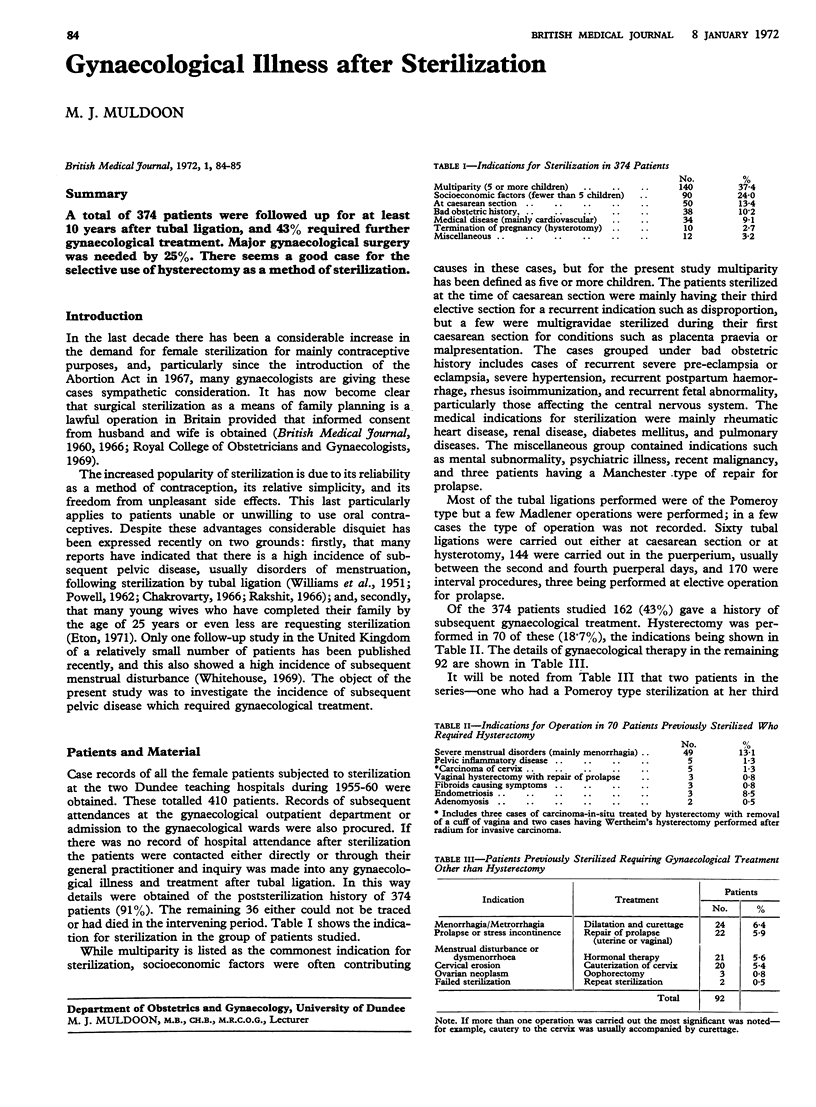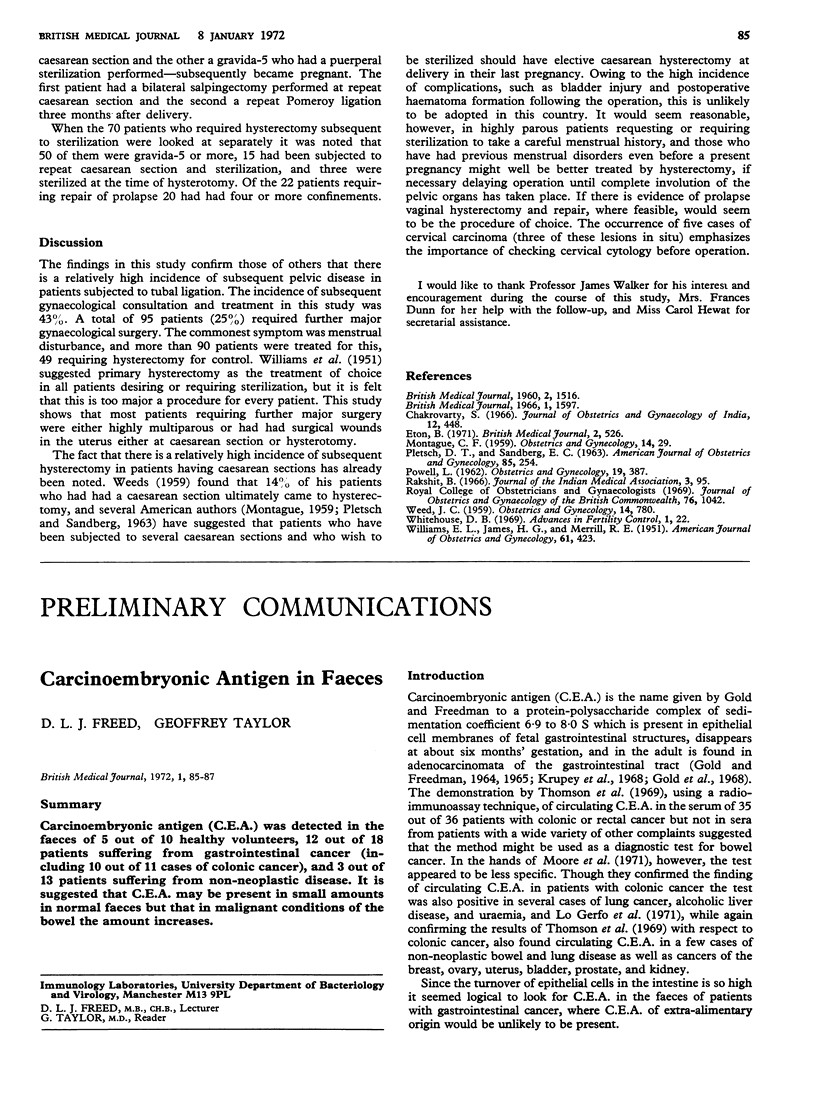Abstract
A total of 374 patients were followed up for at least 10 years after tubal ligation, and 43% required further gynaecological treatment. Major gynaecological surgery was needed by 25%. There seems a good case for the selective use of hysterectomy as a method of sterilization.
Full text
PDF

Selected References
These references are in PubMed. This may not be the complete list of references from this article.
- PLETSCH T. D., SANDBERG E. C. Cesarean hysterectomy for sterilization. Am J Obstet Gynecol. 1963 Jan 15;85:254–259. doi: 10.1016/s0002-9378(16)35399-6. [DOI] [PubMed] [Google Scholar]
- POWELL L. C., Jr Cesarean section sterilization--hysterectomy or tubal ligation? Obstet Gynecol. 1962 Mar;19:387–396. [PubMed] [Google Scholar]
- WEED J. C. The fate of the postcesarean uterus. Obstet Gynecol. 1959 Dec;14:780–785. [PubMed] [Google Scholar]
- WILLIAMS E. L., JONES H. E., MERRILL R. E. The subsequent course of patients sterilized by tubal ligation; a consideration of hysterectomy for sterilization. Am J Obstet Gynecol. 1951 Feb;61(2):423–426. doi: 10.1016/0002-9378(51)90262-1. [DOI] [PubMed] [Google Scholar]


